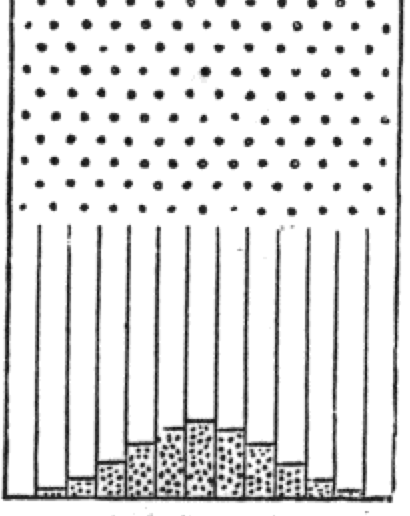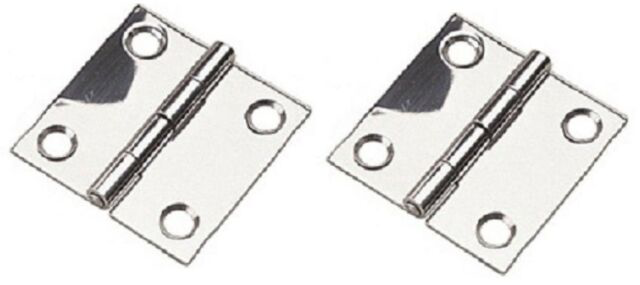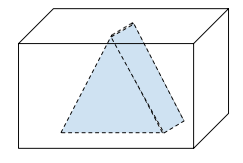-
Posts
2599 -
Joined
-
Days Won
21
Content Type
Profiles
Forums
Events
Everything posted by Ghideon
-
Welcome to our sponsored member poll! Answer the questions for a chance to win a premium set of headphones. The selected winner will be PM’ed by our staff. What is your self-assessed level of expertise within your favourite area? (check one option) - Beginner - Average ⌧ Professional What is our self-assessed level of confidence regarding your contributed material? (check one option) - Poor, I never feel that I’m, right - Most of my posts are correct ⌧ I am never wrong What forum section do you most often post in? (Select one from the drop-down list) Speculations If you are drawn as winner, what brand of headphones do you prefer our sponsor to ship to you? - Bang Olufsen - Bowers & Wilkins - Harman Kardon ⌧ Dunning Kruger
-
I would say that due to miniature imperfections in the balls, the dropping mechanism and the pins. If we look at the first pin, there will be small fluctuations in force and angle of the drop so that it is 50/50 percent change for the ball to go left or right. If the imperfections are small enough the left or right path is not predictable for a single ball. Any small imperfections add up along the balls' path making each pin more or less a 50/50 chance. If there would be too much imperfection the odds would be off, for instance if the machine always would drop the ball too far to the left or right. One should try to build the drop with good* precision. This explanation assumes that the machine is built to be random. If not, there are numerous options. The pins could be spinning or vibrating, There could be an airflow behind the glass front. And lots of others. So far we have discussed one ball. Over a large number of balls the average outcome is very predicable. Unless machine is constructed to be non-random a large numbers of balls will approximate a normal distribution**. This means that there will be more balls in the centre slots than at the edges. After dropping hundreds of balls in the wall machine the piles would look similar to this: Does this answer your question? From here we could discuss the math and its implications on the game setup. Or mechanical aspects of the machine. There are also Some notes: That requires that the machine is built as vacuum chamber. We can assume the machine is built that way. There could be a random generator connected to the drop mechanism allowing it to change the force by some small amount, but not enough to be visible. *) If the precision were 100% perfect all the balls could possibly land exactly head on the first pin, bounce up and down and finally come at rest there. The machine needs (and will always have) some tiny imperfections. **) Example machine and the math is discussed in https://en.m.wikipedia.org/wiki/Bean_machine edit: x-post with @Strange. And no, we did not plan to create identical answers
-
Good point! Maybe I could start a thread directly in trash can...
-
Hmm, that looks like a good idea ... (or maybe drinking whisky with salt is a good idea? But that is probably suited for a separate thread. Psychology, chemistry or speculations, you choose ...)
-
Since the current seems to be drawn as a loop it's direction is into the paper on one side and out of the paper on the other side. Since the B-field seems to have same direction in both of the air gaps and the current have opposite directions you have to take this into account in the calculations. Your assumption is wrong. There cannot be a net force on the system as it is configured in the picture above.
-
Thanks for the kind words @Phi for All. And cheers to @iNow! Disclaimer: The only major brain fart (that I've been made aware of ) on this forum came after a few drinks. The next couple of posts from me may have to be taken with a pinch of salt, at least if a few other members would follow @MigL
-
Incorrect. A charged particle is affected by both the magnetic and the electric field. You need to take both fields into account. The resulting force acting on the particle does not necessarily accelerated the particle along a path that follows the electric field lines. If you claim otherwise, please provide the math so it can be reviewed.
-
Ops! I did not take time differences into account when posting! Maybe we can have a pint (or two) at my next promotion. My conclusion so far regarding this forum and its members: I'll hang around and keep posting...
-
There is an E-field (vector), 45 kV, in the picture. Is that to be taken into account?
-
This is my 1000th post! Time to celebrate, This is a fine moment to open the Islay Single Malt I got for Christmas. Cheers from Ghideon, to all new and old form members!
-
Sources are pretty good. Unfortunately they do not support your claims. Nowhere is it stated that Newtons laws are optional. You need to apply the concepts in the sources together with other laws to be able to make a prediction. For instance, first source states that: http://web.mit.edu/mouser/www/railgun/physics.html That is another way to state what you are attempting. And if you weld this unmoving slug into the barrel of the railgun, the railgun will not be able to propel itself.
-
Wrong Incorrect in this context. If the "current" (electrons) experience a force and not held back by a force from the wire then the electrons will accelerate while the wire remains stationary. You are effetely saying that if three persons are in the box instead of the lifter, and the persons push at correct angles, then the box will lift off the ground. Where did you learn this stuff? Do you have a reference I may look at?
-
A hinge, to me, implies a foldable structure. Applying a force will affect the shape of the structure. Your triangular design is geometrically stable. It looks like you missed the above. Can you provide a detailed analysis why and how you agree or disagree?
-
The new picture above contains current, I and magnetic field, B. The wire is not attached to anything. So I guess that the wire will be pushed away from the source of magnetic fields B. The picture does not apply to the lifter in earlier drawings. I do not know what that is, does it affect one's ability to make sense or learn physics?
-
If the wall has a hinge* so that it can be folded then that can be taken into account by adding relevant force vector to the picture. But since you fail to comment on my analysis it's hard to know. *)
-
I do not question the addition of vectors. I question the fact that there are vector missing. Vectors that are important to be able to predict the outcome of the systems behaviour if it was built and observed. The reasoning is to be found above as a comment on your angled wall example. Another attempt at explaining, reasoning top down from abstraction: We look at the big picture. You have your lifter in the box and it is able to propel itself up, OK? Then replace the lifter with a person. The person pushes his hands against the top of the box, from the inside. From the outside there is no difference, so the internal forces on the box will make it lift and accelerate. Does this sound plausible? Then apply that reasoning (iteratively if you wish) layer by layer through the internals of the system, applying physical laws and formulas as you go, mechanics, electrics, magnetics, down to quantum level if necessary. Always there will be a force and a counter force similar to the person in the box, but applied to smaller and smaller parts of the structure. There will never be a level where the total forces don't add. If there is a net force on some level, that means that there are forces (vectors) that were neglected.
-
The lifter, working in the box, is by definition reactionless. It's funny I did the math you wanted and you choose to ignore to deal with all relevant forces involved in the system.
-
p=mc seems incorrect for photons since photons do not have an invariant mass m. My opinion, based on (limited knowledge) about this is that it seems to mix classical mechanics that do not apply to the model of photons. But I may be wrong, so I would be happy for reference where photon's momentum is calculated from it's invariant mass "m" and the speed of light, "c".
-
That's always a possibility! But when you verified that the lifter will work in the concealed box, accelerating with it upwards, that was the final confirmation that the physics you provide is flawed. To he honest, yes of course! It just took a while to write down the latex notation a few pages back. The vector algebra is really simple in this case. Too bad my explanations fail to show that your math may be correct but does not seem to describe forces of any physics. My first post: I had this initial feeling that you were pursuing a reactionless drive of some sort but the lack of details made it hard to make that statement in the first post. So it was better to address the math question since it was interesting and contained no baseless claims.
-
I think you missed my comment:
-
Have you selected one of the options?
-
Thanks! Then guess the initial question regarding the vector math have been answered: "I need help with my math problem". The vectors I helped verify is correct. But due to a misunderstanding of the physics you end up with something physically impossible, the vectors does not describe a physical valid configuration. By the way, "fancy vector math", when applied to the correct set of forces, will show that internal forces cancel*. Unfortunately you have been unable to follow along in my attempts at explaining this. That means we have reached the end of this thread. From here I see two options, up to you. 1: continue to argue that Newton (and Einstein and others) were wrong, move to speculations and led the moderators close the thread**. You have no evidence that your physics works and seem to object to any attempts to show you how it works or where there are misunderstandings. 2: Continue asking about how physics works, how to analyse systems, add forces, implications of newtons laws etc (maybe a separate thread?) Since we seem to be able to communicate rather well using pictures such a discussion could be productive. But that is only if you are interested in learning, it's up to you. True. And used all the time in electric motors for instance. But have you any reference that this rule is allowed to break the rules of momentum conservation? You can't pick one rule from physics, apply the math in isolation, and expect a valid result. That is due to imaginations or misunderstandings. The laws of physics seems to disagree with your statement. By the way, maybe there is a third option: Maybe they could help you with understanding the basics about mechanics? *unless the stricture breaks apart of course, accelerating cables, iron cores and what not, all around. ** It would be cool to be proven wrong, that evidence supporting this lifter can be provided. But I doubt that.
-
I think you might want to slow down and address the more basic issues first. Note: you are not arguing against me, you are arguing against Newton. I'm just the messenger*. So I'll drop the details and go back to basics for a while until that is sorted out. Situation at the top. Newton's third again: "For every action, there is an equal and opposite reaction." The wall is pushed by two equal forces that cancels each other. Put person P1 and P2? They push against the wall and the wall pushes back with the same force. You have not drawn those forces. I will skip middle image since it is in principle the same as the bottom."For every action, there is an equal and opposite reaction." So the wall pushes back on the persons with force F1 and F2. And since you have nothing to balance the force FTotal F=ma tells us that the wall will accelerate. OR are there other forces you are not drawing? Are there a force from the ground, holding back the wall? And the individuals, are they standing firmly on the ground or are they sliding backwards while pushing? What you are drawing is a free body diagram of the wall, not a diagram for a system of two persons, wall, and ground. Note: the vector sum (F1 + F2 = Ftotal) seems ok. So yes FTotal becomes larger. As will the force from the ground holding back the wall, unless you accept the persons to push away the wall. You seem to constantly confuse components of a system and its internal forces with the sum of forces acting on the complete system. And each time we get close to the core you throw in a set of magnetic fields that seems to get the discussion of track. To further reduce the possibility for misunderstandings about the intention with the lifter, here is again a question about its basic workings: Let's put the lifter in a concealed box. The box has low mass to not interfere with the lifters capacity. "The lifter" means everything that is required for it to operate. Power sources, cables etc. There is no connection to the outside of the box; no electro magnetics, cables, noting. Note that I draw a simple 3d drawing. This is not a cross section of a larger structure. The lifter is started (via a timer since it is not readable from outside the box). If the lifter works as you intend it to do, will the box lift into the air, pushed by the lifter inside it? This is as simple and abstract as it can get I think. It does not matter how the lifter is constructed only that you managed to build it somehow. From my earlier questions and your responses I think you intend the lifter to work in this manner but I want to be sure. Standard disclaimer: There is always the possibility that I'm wrong. I'm trying to argue from a mainstream perspective but my knowledge is of course limited.
-
Thanks for the feedback! A quick check. Router A seems right. Step 2 gets a second route to B through C but since that is longer (=5) you have correctly rejected it. If a third step would be added the router A would get a route to D through B-C but more expensive (=7) so no changes will be made to A's routing table. Router B Seems OK, as argued above Router C has a typo on step 2, I think (0,A) should be (0,C). Also I think the route to A will not change on step 2. Unless there is some weird algorithm or additional information the router will likely keep (1,A) since that is cheaper than going through B at cost 6. Router D seems a little off: 0 | [ (/,/) (/,/) (/,/) (0,D) ] Seems OK 1 | [ (2,A) (0,B) (1,C) (0,D) ] This step could not contain information about A and B yet, how about this: | [(/,/) (/,/) (1,C) (0,D) ] 2 | [ (2,C) (4,C) (1,C) (0,D) ] (4,C) should likely be (5,C) since D->C->B is 1+4=5 3 | [ (6,C) (3,C) (1,C) (0,D) ] (3,C) should likely be (4,C) since D->C->A->B = 1+1+2=4 Important note: I have tried to stay very basic in the analysis above since the exam task does not provide much information. That means that if this is an exam for a specific implementation for instance a certification for a specific brand or manufacturer there could be other things that the exam expects to be taken into account. Additional, non important stuff: I note that this little example looks very simple but contains enough to be used as a basis for a discussion about a lots of additional questions for the interested. Example: if the routers keep the more expensive path instead of dropping them the routers would have backup paths in case of failure. But if they do, additional algorithms may be required. If A knows B can be reached through C, and C knows B can be reached through A, What happens if B goes off-line? Will a package intended for B bounce back and forth between A and C? Such questions is not likely something a network engineer will care much about on a daily bases in a modern environment. Designing the algorithms, improving them, and studying the math behind it is ongoing. The picture reference above is from a book for a course in distributed computing, 1993 edition. Much of it is obsolete now. I guess that newer sources could be based more on interest since the topic contains so much more nowadays.





